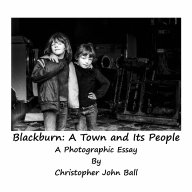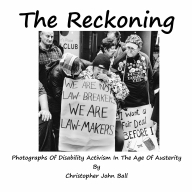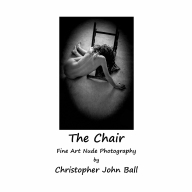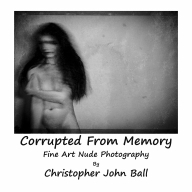
The Photographic Ecstasy: The Photography of Daniel Murtagh by Christopher John Ball

Tweet
A graduate from Brooklyn’s Pratt Institute - New York based photographer and experimental short filmmaker Daniel Murtagh credits his awakening to the creative
possibilities of the medium to his brother. He had a passion for collecting photographs which he shared with Daniel, teaching him “to see more deeply into images” and pointing out “all that the photograph was and what made it beautiful.”
Drawing a sense of composition from artists such as Goya, Rosetti, Schiele and Vermeer and from cinema “an education in light,” Daniel became transfixed with the idea “that one image, a portrait no less, must represent something besides the subject matter,” and that “an emotion, rich with meaning was waiting somewhere in the dance between light and shadow and texture and facial expression and form.”
It was whilst spending a few months photographing in Paris in 1986 that the wait ended and Daniel first had an epiphany – a moment where something within his soul and his eye coalesced. “I felt something happen in me, something about myself that could bind it into a complete vision.” There followed a prolific period of image making as Daniel spent first two years in New Mexico and then seven years in San Francisco building up a substantial portfolio that, in 1997, caught the eye of photographer’s agent Polly Smith.
Daniel began attracting editorial magazine work and felt confident enough to arrange exhibitions of his imagery. He is particularly attracted to showing his work in Café galleries. “I love the idea of my work hanging where people can sit and drink coffee or wine and quietly soak the work in.”
In 2002 Daniel returned to New York to resettle. “For me there was no question that I would return to New York.” Here he started to put into practice what he had learnt from those old movies he watched as a youth and began to experiment with making films. Between 2003 and 2005 Daniel had made five short movies. This would not have been a difficult transition as many of Daniel's photographs exhibit a movement and poetry that remind the viewer of stills plucked from art-house movies. It is as if he has selected an image from the 24 that make the cinematic second in his quest to capture that decisive moment.Just as he enjoys using female models to create much of his still imagery - Daniel predominantly casts women in the film roles because “there is an ideal balance to be
found by expressing emotion and sensuality with woman as protagonist.” Asked to expand further he explains that he believes that women have “a face that looks out from some aspect of human experience I can never really know.” Is this because he is male? Daniel answers that it is “the unknowable part of myself mirrored in the ideal of nature and love and the need to connect with the other, the emotions expressed that are rooted in time.” Not content to just shoot the movie – this multi talented artist also composes the musical score for his films. “Recently I shot my first music video, but having scored all of my own films in some way they are all musical as well as visual experiences.”
Daniel delights in playing with the temporal nature of lens based arts creation as he explores. “A time long gone that may one day come to arrive in the form of a memory. I love the idea that I can create a past that never was in the eyes of a person I will never know. A suspended world locked in every person, the essence of sensuality.” Here Daniel echoes Roland Barthes famous philosophical exploration of the photographic image Camera Lucida. Within the pages of this book, Barthes argues that when looking at the subject depicted within the photographic image one can “never deny that the thing has been there. There is a superimposition here: of reality and the past…we must consider it …as the very essence, the noeme of photography...what I see has been there, in this place which extends between infinity and the subject (operator or spectator); it has been there, and yet immediately separated; it is absolutely, irrefutably present, and yet already deferred.” It could be argued that Daniel’s images are an exploration of what Barthes called ‘the photographic ecstasy.’
Bringing to mind the work of Jeanloup Sieff, Jean-Francois Jonvelle, Imogen Cunningham and Julia Margaret Cameron – Daniel’s gentle imagery effectively blends form, light and composition with a perceptive and revealing sense of intimacy that has attracted publication in magazines as diverse as Elle, American Photographer, Men’s Journal, Health, Soma and Hippocrates. His imagery has graced the covers of some 14 books and has been exhibited on the walls of galleries in Manhattan, Portland Oregon, Albuquerque, New Mexico and Saratoga Springs New York.
Daniel is currently writing the film score for an independent feature film and continues to shoot regularly using good old analogue film “I have yet to move to digital. I see no reason to change something so fundamental and for me essential.” After viewing the results produced via his current working practice – who would criticise him for not wanting to change?
Images (c) Daniel Murtagh
Words (c) Christopher John Ball
A version of this article was first published in PhotoIcon - Volume 2 Issue 1 2007July 2024 Several books, featuring Christopher John Ball's photographs, are now available through Amazon or click on an image below to purchase via secure payments on lulu.com

Tweet








